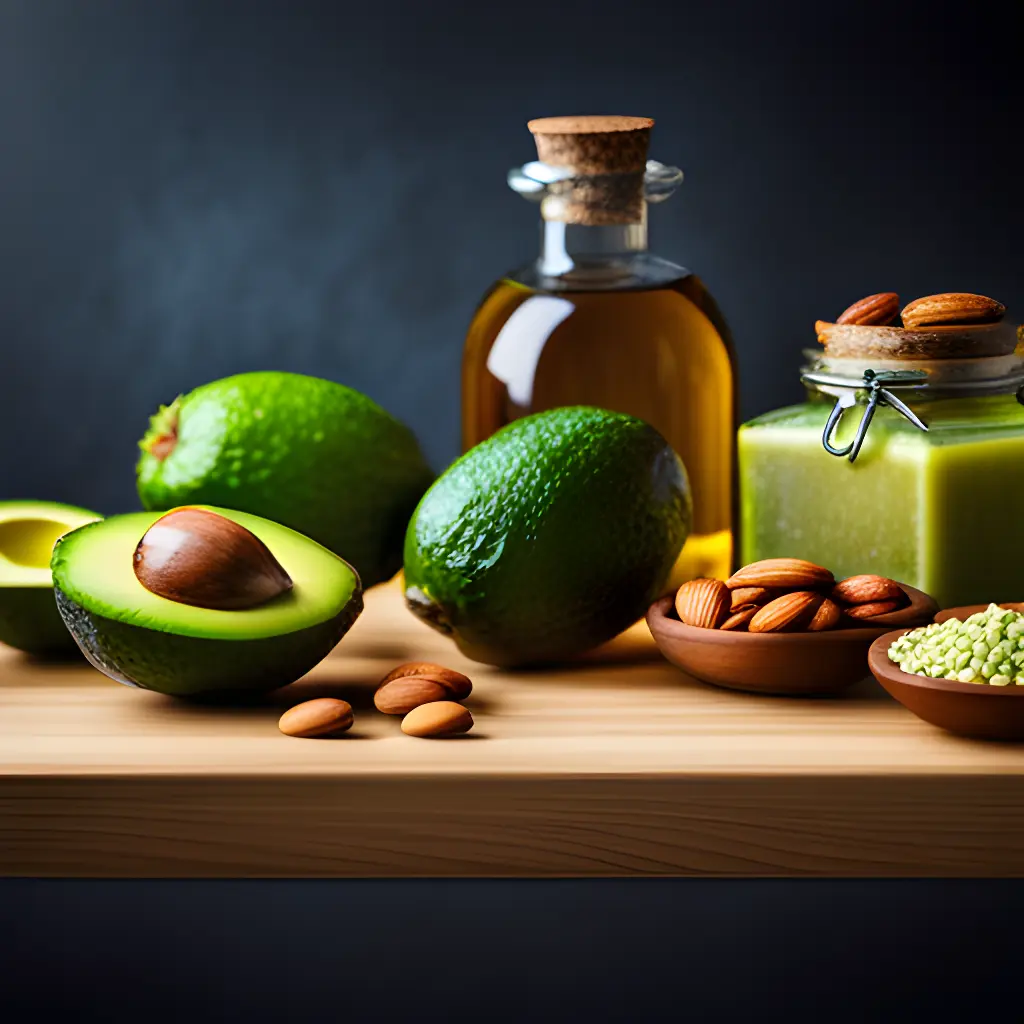Introduction
In today’s health-conscious world, dietary trends come and go, and one that has gained substantial attention is the high fat diet.
While the idea of increasing fat intake might seem counterintuitive, it’s essential to explore this concept in detail to understand its potential benefits and risks.
In this comprehensive guide, we’ll delve into what exactly constitutes a high fat diet, its effects on the body, and whether it’s a suitable choice for you.
What is a high fat diet?
A high fat diet, simply put, involves increasing the consumption of fats compared to conventional dietary norms. This approach often reduces the intake of carbohydrates and sometimes even proteins.
The aim is to shift the body’s primary source of energy from carbohydrates to fats, leading to a state of ketosis. This metabolic state has been linked to various health benefits, which we’ll explore later in this article.
Macronutrients: Fats, Carbohydrates, and Proteins
Before diving deeper into the high fat diet, let’s understand the role of micronutrients in our bodies. Fats, carbohydrates, and proteins are the three primary macronutrients that provide the energy needed for various bodily functions.
Fats, in particular, are a concentrated source of energy, with each gram providing twice the calories as carbohydrates and proteins. Carbohydrates are the body’s preferred energy source, while proteins play a crucial role in tissue repair and growth.
Types of Fats in a High-Fat Diet
Not all fats are created equal, and it’s vital to distinguish between healthy fats and unhealthy fats. Healthy fats, such as unsaturated fats found in avocados, nuts, and olive oil, are known to have numerous health benefits.
On the other hand, saturated and trans fats, commonly found in processed snacks and fried foods, are associated with heart health concerns and should be consumed in moderation.
Benefits of a High-Fat Diet
Embracing a high-fat diet can bring about various potential benefits, thanks to the metabolic changes it triggers. One notable advantage is weight loss, as the body taps into its fat stores for energy.
This process leads to improved satiety and reduced cravings, making it easier to adhere to the diet. Moreover, a high-fat diet can enhance metabolic flexibility, allowing the body to switch between using glucose and ketones for energy.
This flexibility is thought to have positive effects on blood sugar levels and overall metabolic health.
Now that we’ve explored the potential benefits of a high-fat diet, let’s turn our attention to the risks and considerations associated with this dietary approach.
Risks and Considerations
While a high-fat diet offers promising benefits, it’s not without risks and considerations. One major concern is the potential impact on heart health due to increased consumption of saturated fats.
It’s crucial to choose healthy sources of fats and prioritize unsaturated fats over saturated ones. Additionally, inadequate planning of a high-fat diet can lead to nutrient deficiencies, as some essential nutrients are primarily found in carbohydrate-rich foods.
Digestive issues might also arise during the transition phase, as the body adapts to the new dietary pattern.
How Does a High-Fat Diet Work?
The science behind a high-fat diet revolves around the concept of ketosis. When carbohydrates are limited, the body begins to break down fats into molecules called ketones, which serve as an alternative energy source.
This shift in fuel utilization leads to reduced insulin levels, promoting fat breakdown and utilization. As a result, individuals on a high-fat diet often experience increased energy levels and improved mental clarity.
Now that we’ve covered the mechanics of how a high-fat diet works, let’s explore how to get started on this dietary journey.
Getting Started with a High-Fat Diet
If you’re considering trying a high-fat diet, it’s essential to approach the transition thoughtfully. Start by gradually reducing carbohydrate intake while increasing healthy fat consumption.
Incorporate foods like avocados, nuts, seeds, and fatty fish into your meals. However, before making significant dietary changes, it’s advisable to consult a healthcare professional to ensure that the diet aligns with your health goals and medical history.

Sample High Fat Diet Meal Plan
To provide a practical example of what a day on a high-fat diet could look like, here’s a sample meal plan:
- Breakfast: Start the day with a hearty avocado and eggs scramble, seasoned with herbs and a drizzle of olive oil.
- Lunch: Enjoy a grilled salmon salad with a variety of colourful vegetables. Dress the salad with homemade olive oil and lemon dressing for a dose of healthy fats.
- Snack: Munch on a handful of mixed nuts and seeds, such as almonds, walnuts, and chia seeds. These nutrient-dense snacks provide satiety and energy.
- Dinner: For dinner, savour roasted chicken thighs cooked in coconut oil, accompanied by a side of sautéed broccoli and cauliflower.
Success Stories and Testimonials
Real-life success stories underscore the potential benefits of a high-fat diet. Many individuals have reported substantial weight loss, increased energy levels, and improved mental focus.
One success story involves Jane, who struggled with weight management for years. After adopting a high-fat diet and embracing healthy fats, Jane shed excess pounds and experienced newfound vitality.
FAQs about high-fat diets
Q1: Is a high-fat diet suitable for everyone?
A: A high-fat diet may be beneficial for some individuals, particularly those seeking weight loss and improved metabolic health. However, it’s essential to consult a healthcare professional before making any significant dietary changes, especially if you have underlying health conditions.
Q2: How long does it take to enter ketosis?
A: The time it takes to enter ketosis varies from person to person. Typically, it may take a few days to a week to consistently follow a low-carbohydrate, high-fat diet to achieve ketosis.
Q3: Can you exercise on a high-fat diet?
A: Yes, exercise can complement a high-fat diet. Engaging in physical activity can help improve metabolic flexibility and enhance the body’s ability to utilize both glucose and ketones for energy.
Navigating the High-Fat Diet Landscape
the high-fat diet is a dietary approach that has captured the interest of many health enthusiasts. By strategically increasing healthy fat intake and reducing carbohydrates, individuals can tap into the potential benefits of weight loss, improved metabolic flexibility, and enhanced mental clarity.
However, it’s crucial to approach this diet with mindfulness, opting for healthy fat sources and seeking professional guidance. Remember that dietary choices should align with your individual health goals and preferences.
Ready to Embrace the High Fat Journey?
- The Ultimate Keto Meal Plan: From breakfast to dinner and everything in between, this guide provides mouth watering recipes, invaluable tips, and a roadmap to achieving your health and wellness goals.
- Keto-friendly cookbook: Explore a variety of delicious high-fat recipes with this cookbook.







